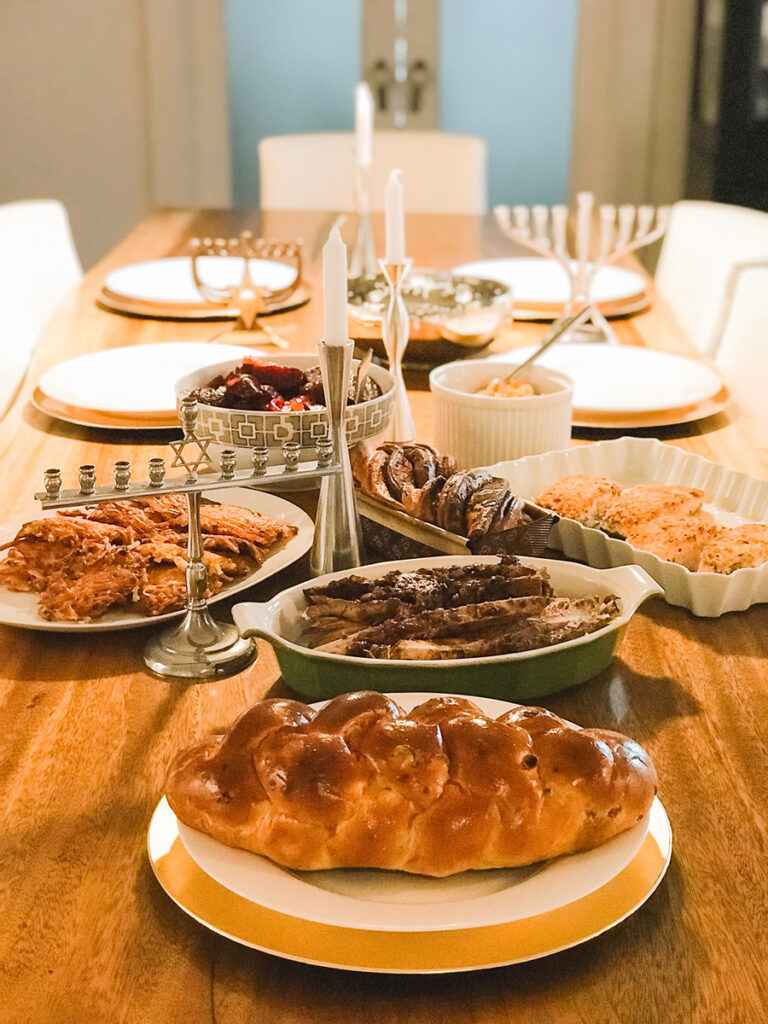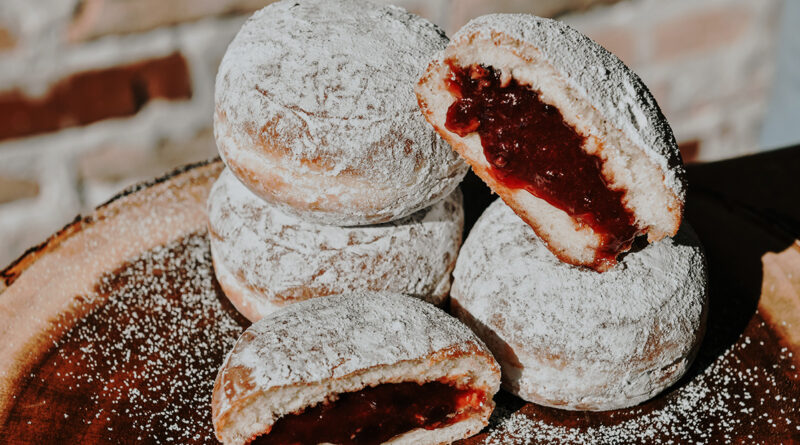How to Hanukkah: Latkes, Jelly Doughnuts, Brisket, Challah Bread
December is “the” holiday month when we are collectively allowed to indulge a bit more in food and beverage associated with holidays. It’s a time to gather around food, the universal connector.
This year, Hanukkah starts at sunset on Dec. 7 and concludes on Dec. 15, a week when non-Jews are still shopping, planning, and, often oblivious to the celebrations taking place in our neighbors’ homes.
I chatted with Preston Hollow resident Tina Wasserman, a cookbook author and expert on Jewish cooking and food history and she shared fascinating histories of some traditional Hannukah foods, how to make them, and where to buy them in Dallas.

First, a brief history. Also known as the Festival of Lights, Hanukkah celebrates the power of a small light to overcome darkness. In 164 B.C., Judah the Maccabee led the fight to reclaim the Jewish Temple in Jerusalem which then had to be rededicated. Though the Temple was restored, there was only one vial – one day’s worth – of oil to illuminate the candelabra. Miraculously, the oil provided light for eight days and Hanukkah has been celebrated since.
Traditional foods include latkes, jelly doughnuts, brisket, and challah bread. Christmas gets fruitcake, Hanukkah gets jelly doughnuts. Hanukkah for the win.
Fried food takes a leading role in these celebrations, perhaps the most ubiquitous being latkes, which are not your average hash brown. They’re made with matzo and egg to bind them, keeping them crisp on the outside and soft on the inside. Wasserman makes her own and picks up bundles of Bubba’s fried chicken for her meals. You can buy latkes at Central Market, Sadelle’s, and Beverley’s.
There’s no hard and fast rule about how your Hanukkah brisket is prepared, but traditionally, it’s oven baked and served with gravy, rather than smoked the Texas way. Tina’s cooking tidbit is to buy a fatty brisket, combine a packet of onion soup mix with apricot preserves such as Bon Maman, made with sugar not high-fructose corn syrup, and bake low and slow.
Let’s get to the jelly doughnuts, known as “sufganiyot,” which is first written about in the 12th century but its predecessor, fried dough with sweet syrup, is ancient. The modern history of Hanukkah jelly doughnuts is fascinating and essentially came about as a jobs and economic program. In the late 1920s, the Jewish labor organization wanted to create work opportunities, so it promoted jelly doughnuts which created jobs for farmers, millers, builders, bakers, and transportation operators. Everyone wins.
Local foodie and content creator, Rachel Pinn, gets her doughnuts at Jaram’s or The Salty Donut, which has specific Hanukkah doughnuts. You can also get your jelly doughnut fix at The Market, Rings, Mustang Donuts, and Crave Donuts. To me, a good doughnut is manna, and Dallas has some great doughnuts.
Breaking bread with people of a different tradition than your own fosters community. It won’t solve the world’s problems but sometimes, sharing traditions and kindness can be a small light that can overcome darkness.









